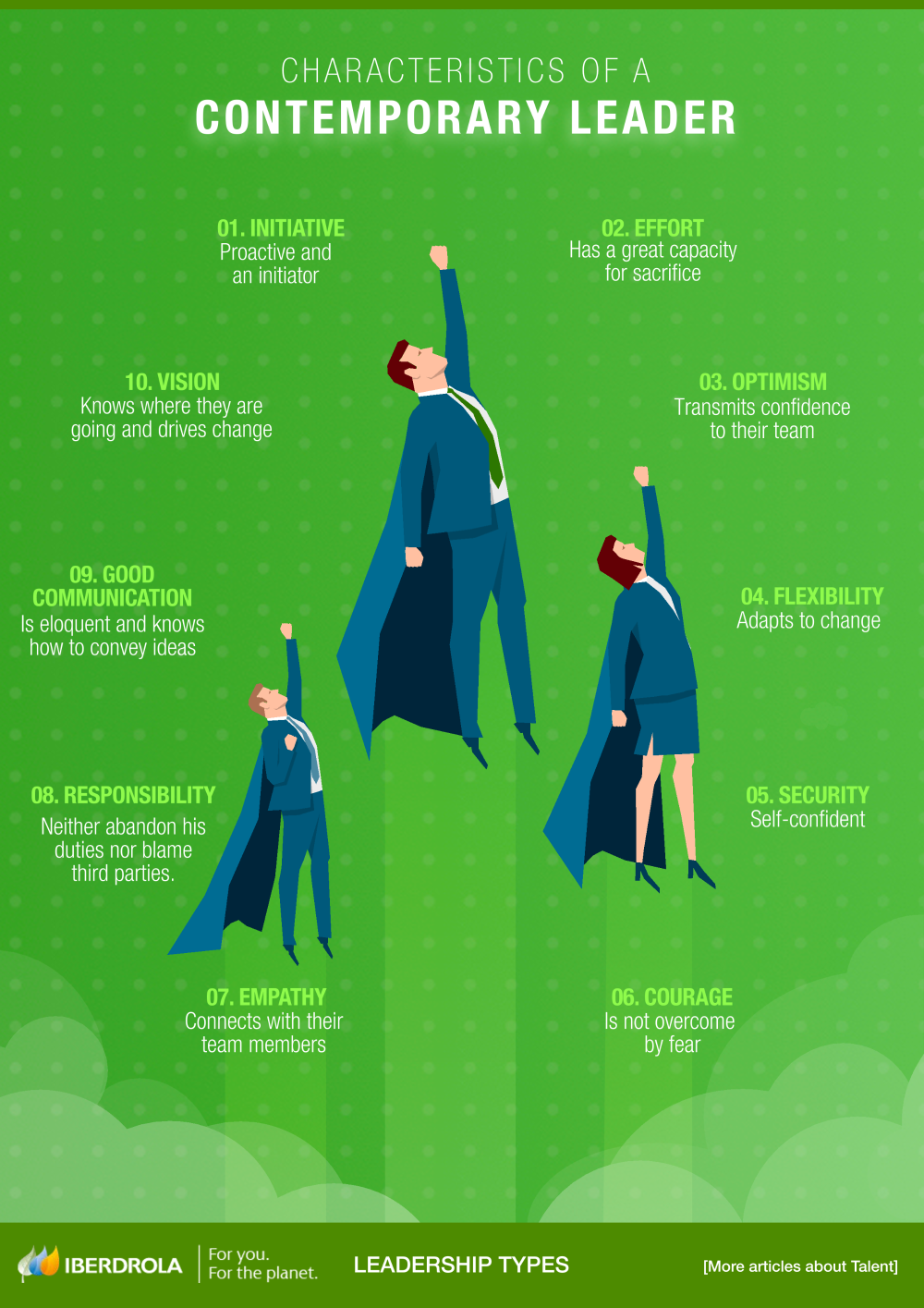Business leadership styles
Business leadership: which are the main styles?
Professional skills Leadership
One of the main tasks of a business leader is to get their team to believe in a project, keep them motivated and make the best of each member in pursuit of the corporate goals. The problem is that there is no magic formula and, therefore, we have a wide range of leadership styles.

The right question to ask is not why does every organisation need to have leaders, but what style of leadership is needed in each particular case. In the case of a company, this will depend on a number of different factors: its position in the market, internal organisation, business model, corporate objectives and the trends in the environment in which it operates. Be that as it may, the leadership style chosen will be the key to an organisation's success or failure.
Types of business leadership
According to the consultancy Mind Tools the following are the main current styles of business leadership:
'Laissez Faire' Leadership
This is based on the principle that the workers have the necessary skills and experience to carry out their work and, therefore, any intervention by management is harmful. A laissez faire leader makes their team feel less constrained and more valued.
Democratic Leadership
The democratic leader promotes the participation of the entire team — they consult their workers and take their opinions into account when making decisions. Therefore, they encourage dialogue and make workers feel part of the company, improving their commitment to it.
Transactional Leadership
This is based on a reward system. The leader rewards workers for their performance and this transaction encourages them to meet their objectives. The main function of this leader is to create structures so that each team member can work towards achieving their goals.
Transformational Leadership
This leadership style promotes innovation. These leaders have great communication skills and encourage creative participation by inspiring their team. In addition, they are not afraid to take risks. This is how they bring about transformations in the company and in its workers to adapt to the new times.
Situational Leadership
These leaders are flexible, that is, they adapt to the circumstances. The leader knows the maturity of their workers and the needs of the company and, accordingly, applies the most appropriate leadership style, changing it when the situation requires or managing each employee with a different style.


Pódcast with Ignacio Galán
Ignacio Galán, Executive Chairman of Iberdrola, talks about successful business leadership.

Transformational leadership
How to drive change through people.

Personality at work
A sua personalidade afeta seu desenvolvimento profissional?

Soft skills
The value of soft skills in today's labour market.
Leadership in the digital age
Our contemporary world is marked by digitalisation and in this type of environment organisations need VUCA leaders. In the second half of the twentieth century, the US military coined this acronym (Volatility, Uncertainty, Complexity, Ambiguity) to denote a scenario characterised by instability. And this is the context, a complex environment marked by a wave of changes arising from the digital revolution and the emergence of the millennials, in which companies are moving today. This leadership style, which is typical of the digital era, is characterised by:
![]() Great flexibility to adapt to volatility.
Great flexibility to adapt to volatility.
![]() Constant training to tackle uncertainty.
Constant training to tackle uncertainty.
![]() Agility to respond to changes and to leave no room for ambiguity.
Agility to respond to changes and to leave no room for ambiguity.
![]() An ability to communicate clearly and simply to combat complexity.
An ability to communicate clearly and simply to combat complexity.
![]() A collaborative leadership style, which trusts the team and gives it freedom.
A collaborative leadership style, which trusts the team and gives it freedom.
![]() An ability to understand the digital revolution and the changes it is generating.
An ability to understand the digital revolution and the changes it is generating.
![]() Emotional management to direct the mindset of the millennial generation.
Emotional management to direct the mindset of the millennial generation.
The leader in history
The figure of the leader in history has evolved from leaders who based their power on force to the more rational forms of leadership today, such as the aforementioned VUCA leader. Leadership, therefore, has been adapting to the needs of the era. In the most unstable eras, such as the first half of the twentieth century, the leaders who imposed their will thanks to their character and their ability to make difficult decisions were the most valued, while in stable times they are seen as authoritarian and lacking in empathy.
Now, the figure of the leader is that of a manager who occupies their position thanks to their charisma or experience, they promote horizontal communication, they take the opinion of their team into account and care about their well-being and, at the same time, try to minimise the impact of their decisions on the planet. This is a leadership style commonly found in democracies and that, in the business world, has led to codes of good governance aimed at ensuring companies are managed in a fairer, more transparent and effective manner. It has also led to improvements in internal control and Corporate Social Responsibility (CSR).
Are leaders born or made? Charismatic leader Vs. Bureaucratic leader
The born leader is known today as a charismatic leader. As the name implies, it is someone who takes the helm thanks to a quality that cannot be learned from handbooks. They have a magnetic personality, their team perceives them as someone special and constantly seeks their approval. Charismatic leaders create a positive environment and get their team to focus on projects. They are good communicators and this can sometimes disguise their lack of training for the job.
On the other side of the coin is the bureaucratic leader, who adheres to the strict rules arising from corporate policy. Their charisma, or lack of it, does not worry them because they lead their team based on rules that must be followed closely to achieve goals. They worship efficiency and this usually guarantees the quality of their work. On the negative side, these leaders do not adapt well to change and they create a rigid work environment with little space for communication and creativity.





